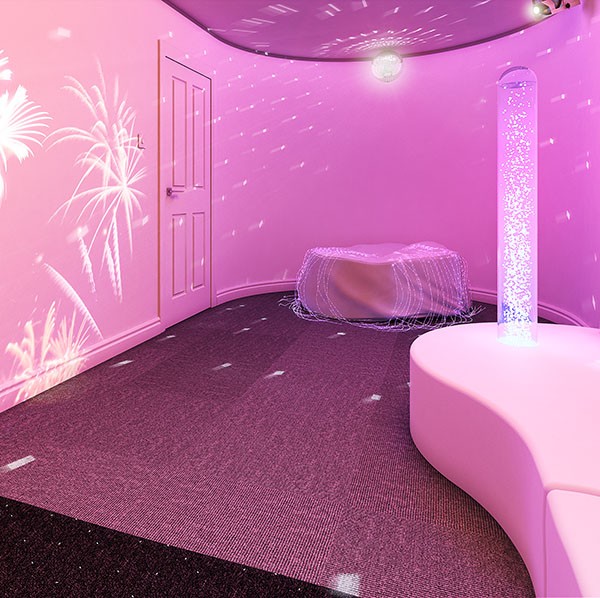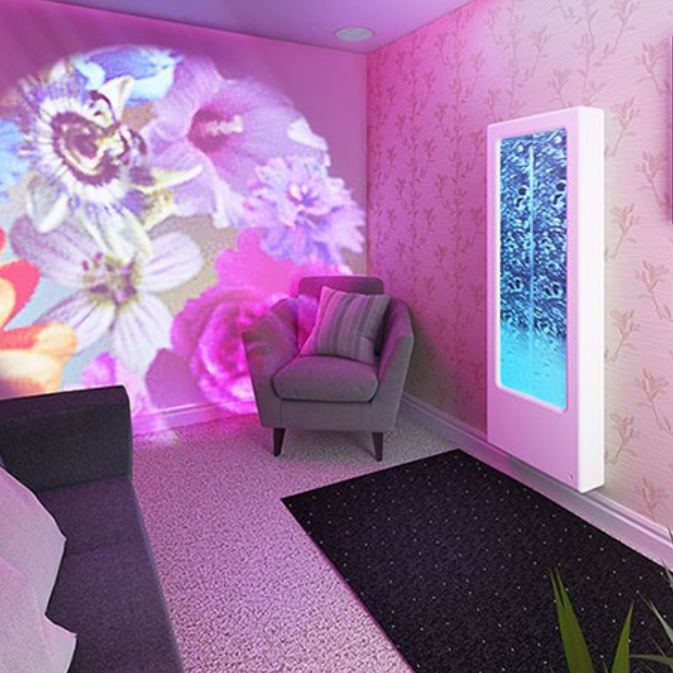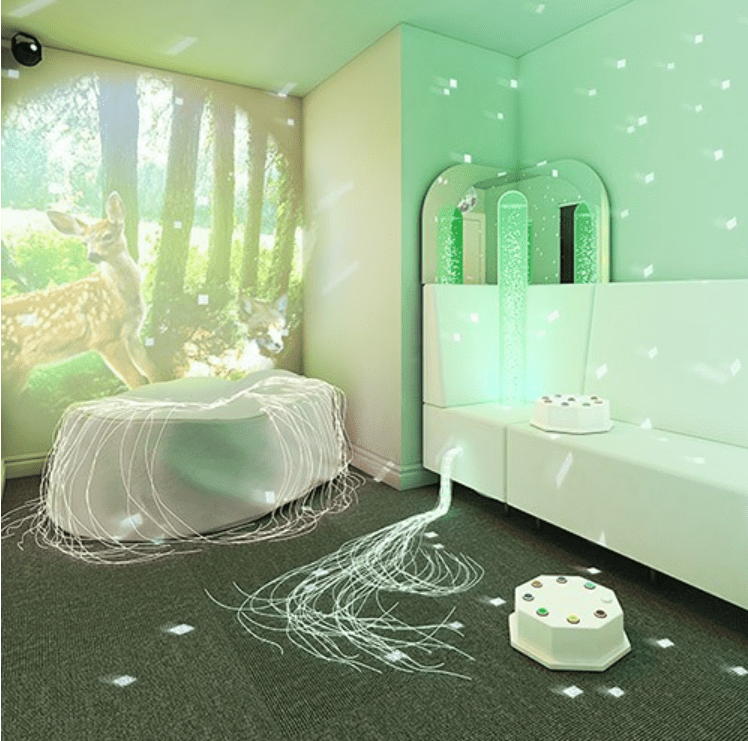
By now, in 2019, you've probably heard the term 'sensory room' more than a few times. These multi-sensory environments are popping up everywhere, and outside of the usual care/specialist environments too, from dental practices to mainstream schools and even football stadiums. With all this positive buzz, you might be left wondering, 'what exactly is a sensory room?'. As the UK's number 1 creators of multi-sensory equipment, here at Experia we're passionate about spreading awareness of just how valuable and important access to sensory rooms and other multi-sensory environments is. Keep reading to discover exactly what sensory rooms are, and who they benefit!

Our Wabi-Sabi Calming Sensory Room, featuring bubbles tubes, fibre optic lights and projectors
Sensory rooms are indoor environments specially designed to provide a full multi-sensory experience to their users. Originally, the purpose of these rooms was to provide a de-escalation area and relaxing environment, particularly for people with autism, emotional and behavioural difficulties and sensory processing disorder, who, because of their conditions, regularly require a safe space to maintain emotions and behaviour. Sensory rooms are completely free of distraction, and subsequently allow the user to immerse themselves within this protective environment, largely thanks to the different sensory equipment they contain. For those with the above conditions, sensory rooms can be an absolute lifesaver, especially in overwhelming public scenarios.
A multi-sensory environment can be achieved without a full sensory room through the use of sensory products; however, a sensory room is almost always the preferred option.

Our Karvonen Sensory Room built for those with Dementia, featuring a bubble wall, LED lighting effects and reminiscent music
Whilst it's true that certain special populations require more use of, and get more out of, multi-sensory environments such as sensory rooms, that's not to say the rooms don't also hold tremendous value for other users and abilities. The following are just some additional special populations that also benefit greatly from the use of a sensory room – click on each to learn more about the sensory rooms benefits for that group specifically:
However, even those who do not fall into any special abilities category can still benefit from the use of a sensory room, to process thoughts and emotions when life becomes overwhelming. Indeed, it's highly arguable that time spent in sensory rooms benefits all ages and abilities.
The key reason that sensory rooms are advantageous to so many diverse abilities is that different types of sensory room and equipment exist, and each with different goals. Some improve fine motor skills, some aid shape recognition, some facilitate reminiscence and aid memory, and some focus on sound and music therapy (amongst numerous other uses). Many focus on a mixture of the above, which allows various abilities to use the same room for different purposes.

Our Ikigai Premium Interactive Sensory Room, featuring multi-button controllers, bubble tubes and projectors
Whilst different sensory rooms can contain diverse equipment, depending on the need the room is fulfilling, some popular sensory products are pretty universal, and can be found in almost every sensory room. Some of the UK's most popular sensory products include fibre optics, projectors, and, of course, bubble tubes.
When deciding what a sensory room should contain, the first question you should ask yourself is; what is the room's purpose? Whilst sensory rooms serve a multitude of purposes, they can largely be categorised as either calming or stimulating; either providing a relaxing, de-stressing space, or an interactive area to inspire the imagination and encourage exploration and learning. Once you've decided which type of environment you'd like to create, you can then fill your room accordingly with the appropriate equipment. Some equipment, such as the above popular products, can be used to both calm and stimulate. Browse our range for a better idea of which items you could include in your room.
It's also key to make sure you're accommodating each different sense. Some items may be auditory, some may be visually focused, some may make use of touch, and so on. Sensory rooms should therefore either contain a mixture of products to suit all senses, or include only those required by a particular individual's needs, if the sensory room is to be private.
Browse all of our sensory rooms to see what fits your particular needs. And if you need help setting up a sensory room in your local area, please don't hesitate to get in touch with our friendly team of sensory experts, and we'll gladly assist! Alternatively, keep reading our blog for more sensory information and resources.